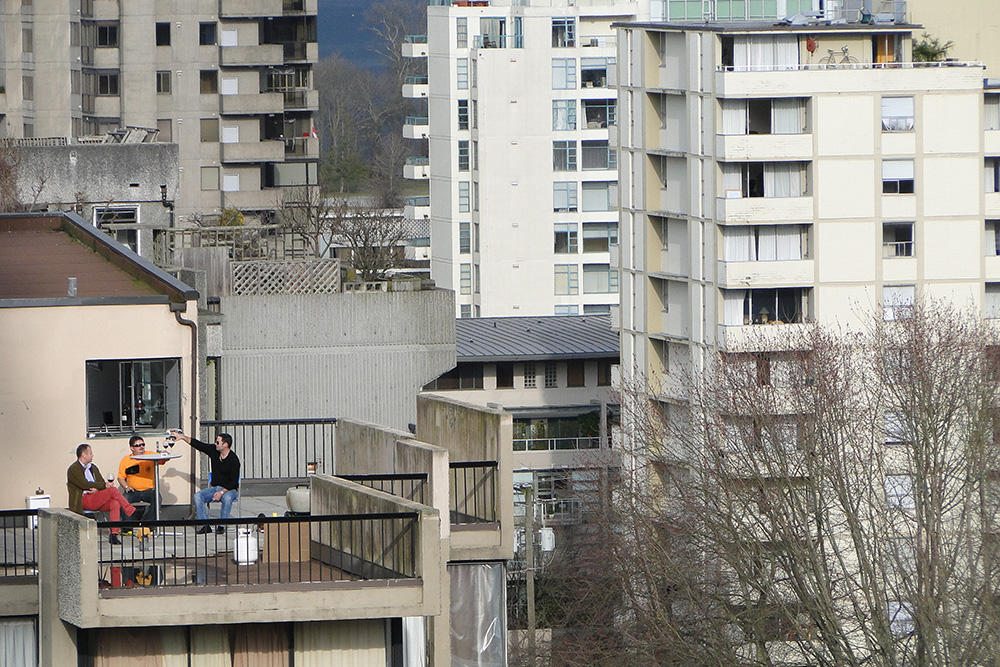We’re starting to hear suburbs should be back in fashion again because they are more “healthy.” The idea is that travelling everywhere by vehicle and retiring to a large leafy house with lots of space may enhance needed COVID-19 physical distancing.
The notion dovetails with another widely held assumption — that urban density increases mortality during pandemics.
Researchers Jim Sallis and Deepti Adlakha disagree. Writing in the Australian Times, they contradict that suburbs are safer, concluding that the idea of density as unhealthy is an “oversimplification and misleading when it comes to COVID-19.” Sallis further elaborates in a video presentation here.
Adlakha is trained in planning. Sallis is a professor of family and preventative medicine. They teamed to research 36 of the densest global cities and found “near-zero” correlation between density and COVID-19 morbidity and mortality.
Their findings reflect the experience in Taiwan and Singapore where a centralized governmental approach took the pandemic very seriously from the outset and have had minimal cases and deaths. Taiwan has had fewer than 10 deaths, while Singapore has had fewer than 30.
Sallis and Adlakha conclude that the problem is how living quarters and neighbourhoods are designed. The issue is not density — the number of people living within a square mile — but whether they face a “lack of space — both private living space and wider neighbourhood public space. The top five most-crowded neighbourhoods in the United Kingdom have seen 70 per cent more COVID-19 cases than the five least-crowded neighbourhoods, even after controlling for local deprivation. It’s not how many people live in a certain area that matters, but the conditions they live in.”
Urban density, instead of being an enabler of a bio-medical emergency, actually has “protective benefits.” Inhabitants living in higher densities walk more to services shops and schools, and two decades of data show this increased walkable accessibility lowers incidence of heart disease, diabetes and obesity.
In cities, public health needs to be enhanced by well-built and separated sidewalks and cycling facilities that “have a double benefit, both reducing the spread of COVID-19 by reducing any crowding in the streets and lowering the risk of deadly chronic diseases” by enabling exercise.
What is also crucial is the inequality and inequity of low-income communities, where higher living densities means there is less personal space to follow physical distancing guidelines. These units often without balconies and with less frequent access to public outdoor space “compound the issue of overcrowding — the risk of coronavirus infection may be up to 20 times higher when indoors than outdoors.”
Where public space is not readily available, the importance of wide, properly installed accessible sidewalks and protected lanes for cycling is vitally important. Cities like Calgary and Winnipeg have already designated parts of the street network for walking and cycling only, and in the case of Vancouver, lowered speed limits on some shared streets.
So for residents in cramped housing without private outdoor space, local parks could offer respite and decrease exposure to infectious diseases.
While it is clear that “extreme crowding” in housing should be mitigated, access to public space, parks bike lanes and a superlative pedestrian network is also key. The authors point out that this space and access should not be an add-on but be an “essential component” of walkable communities, which by their design and use “protect people from chronic diseases.”
If you live in a dense, walkable neighbourhood now, think twice before you move to the suburbs. If doing so means you spend less time actually moving around under your own power, it could put you more at risk of getting sick.
This piece is adapted from a version that first ran in Price Tags, an excellent source of insights about urban design and planning. ![]()
Read more: Coronavirus, Urban Planning + Architecture
















Tyee Commenting Guidelines
Comments that violate guidelines risk being deleted, and violations may result in a temporary or permanent user ban. Maintain the spirit of good conversation to stay in the discussion.
*Please note The Tyee is not a forum for spreading misinformation about COVID-19, denying its existence or minimizing its risk to public health.
Do:
Do not: